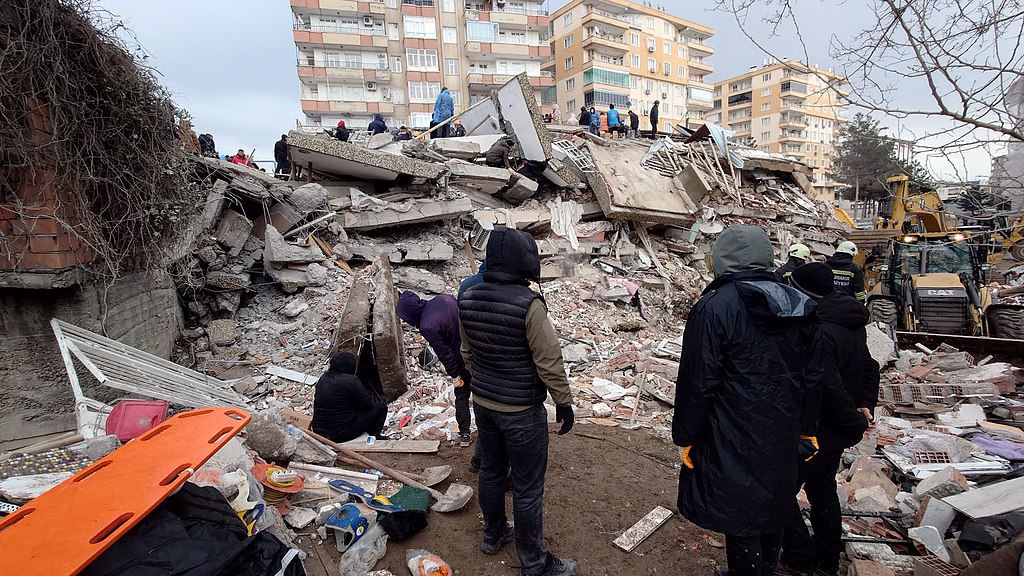
As we returned to university this term, the arrival of fresher’s weeks was marked by a reminder of the growing environmental challenges facing our planet. On September 17th, Exeter was thrust into chaos when the always-busy Pennsylvania Road became heavily flooded. Awful right? Yet, this local ordeal, destructive as it was, pales in comparison to the events that unfolded just days before our mini-climate crisis.
In two North African nations, the forces of nature unleashed a catastrophic symphony of destruction, leaving scars on their landscapes and societies. Morocco bore witness to a 6.8 magnitude earthquake, the most devastating in its recorded history. Meanwhile, Libya found itself at the mercy of relentless floods, as Libya’s National Meteorological Centre recorded a staggering daily rainfall rate of 414.1 mm from the 10th of September.
On the night of September 8th, the shifting of tectonic plates along the African and Eurasian fault line unleashed a cataclysmic earthquake that surged through the heart of the Marrakesh-Surfi region in Morocco, home to a population of 4.5 million. In its wake, entire villages lay flattened, thousands of buildings collapsed, and many more suffered profound structural damage. As the dust settled, it emerged that at least 300,000 people have had their lives forever changed — either injured or forcibly uprooted — and an estimate of at least 3,000 people have lost their lives.
During natural disasters, such as this earthquake, it is imperative to speak to people at the epicentre. I had the privilege of hearing from Alice Morrison, a freelance journalist and adventurer residing in Morocco about what she has witnessed since the earthquake hit.
Morrison conveyed to me the profound sense of togetherness in Morocco at the moment; “from the very beginning there was a sense of community, we all gathered together, I’m a foreigner but I was taken consideration of equally to any other member of the family.” Much of this communal resolve, she said, was underpinned by the trust and affection the people of Morocco have for their King, who immediately declared the government’s commitment to rebuilding every affected person’s house.
Describing the resilience of Moroccans post-earthquake, Morrison highlighted the significance of “the principle of ummah”. The idea of a community of believers is fundamental, emphasising the strength derived from a united collective spirit.
The most striking revelation from Alice Morrison’s insights came from her journey toward the earthquake’s epicentre. There, she encountered a woman who had buried her mother and was desperately searching for her father and seven-year-old son in the rubble. Morrison painted a poignant picture, describing the woman as “like an empty person, as if the woman was gone… I find it terribly affecting.” It was clear, that for Morrison who has immersed herself in Morocco for five years, this experience was deeply moving.
Numbers are one thing but each of those people had a family, each of those people were irreplaceable.
Alice Morrison
“Morocco is a modern developed country with a very sensible, secure government and good infrastructure. I’ve lived here for five years; I know people very well. I felt a bit sensitive sometimes to the narratives which aren’t how you would talk about, say, a disaster in Scotland. You wouldn’t be using some of the terms that we used.”
This underscores a crucial point from Alice Morrison. It is fundamentally important for Western media to ensure it does not condescend when reporting on disasters in other countries.
It is fundamentally important for Western media to ensure it does not condescend when reporting on disasters in other countries
Two days after the Moroccan earthquake, and 2300 miles to the East, monumental flooding descended upon the Northeast region of Libya, with the city of Derna bearing the brunt of nature’s wrath. Torrential rainfall led to the rupture of two dams which submerged Derna into a real-life nightmare. The World Health Organisation has recorded at least 4,225 deaths with thousands more missing.
Excessive rainfall from Storm Daniel was inevitably going to pose challenges for Libya, but the severity and brutality of the Libyan flooding stemmed from leadership failures to address issues with the dam system. Two dams on the Wadi Derna River burst, despite prior warnings about the sustainability of these structures, which were constructed in 1977 and have seen no maintenance work since 2002.
In the aftermath of the flooding, 16 officials have been detained.
Attention is now strongly shifting towards the potential health impacts. Damaged sanitation systems, contaminated floodwaters, and substantial numbers of unrecovered casualties could potentially lead to a secondary disaster. The risk of diseases post-flooding is high as health infrastructure is often severely compromised in the aftermath.
Both countries have garnered a range of international aid, with organisations such as the Red Cross and UNICEF spearheading fundraising initiatives. The path to recovery, however, differs significantly between the two nations. Morocco has committed to a comprehensive rebuilding effort, pledging to reconstruct all homes and offering financial assistance to families until their residences are restored. In contrast, Libya’s recovery journey appears more challenging, marked by protests in Derna against the Speaker of the House of Representatives, adding a layer of complexity to the already intricate process.
Take a look at Alice Morrison’s blog here where she documents her travels and adventures.


